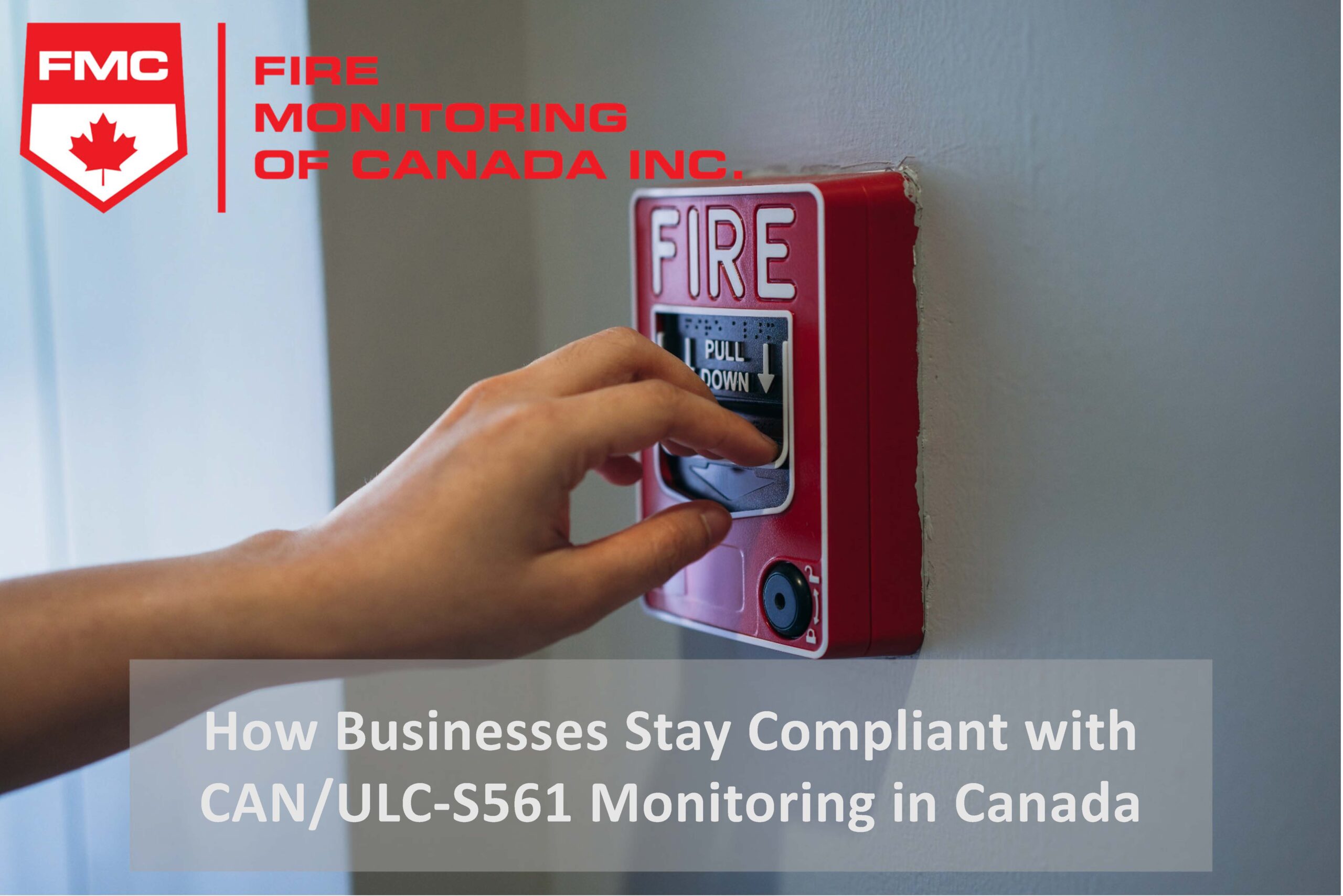ULC-S561 Compliance in Canada: Step-by-Step Guide to Fire Alarm Monitoring Standards

ULC-S561 Compliance in Canada: Step-by-Step Guide to Fire Alarm Monitoring Standards
ULC-S561 compliance in Canada is essential for every business and facility that operates a monitored fire alarm system. This national standard, developed by Underwriters’ Laboratories of Canada (ULC), ensures that fire alarm monitoring systems are installed, maintained, and operated to the highest life-safety standards.
Understanding and following the ULC-S561 fire alarm standards in Canada is critical for maintaining insurance eligibility, occupancy certification, and, most importantly, the safety of your building’s occupants. Let’s get your building compliant with ULC-S561 fire monitoring.
Step 1: Understand What ULC-S561 Covers
The ULC-S561 standard defines the technical and operational requirements for:
- Installing fire alarm monitoring transmitters and communication paths
- Operating ULC-listed signal receiving centres
- Testing, maintenance, and documentation needed for ULC-S561 compliance
This ensures that every signal path between your fire alarm panel and monitoring centre is reliable, supervised, and secure, helping emergency responders act quickly.
Step 2: Partner with a ULC-Listed Monitoring Company
To achieve ULC-S561 compliance in Canada, your fire alarm system must be connected to a ULC-Listed Signal Receiving Centre (SRC). When evaluating providers:
- Confirm they hold a valid ULC Certificate of Compliance
- Ensure the certificate lists your building address and renews annually
- Verify that both the monitoring station and installer follow the most recent revision of ULC-S561
Tip: Check the ULC directory or visit FMC’s ULC-S561 Certified Monitoring page for details.
Step 3: Ensure Proper Installation and Verification
Compliance begins with installation. Your fire alarm communicator must be:
- Installed by a ULC-listed fire signal installation company
- Connected to approved communication paths (cellular, IP, or dedicated lines)
- Tested and verified per ULC-S561 Section 10 for full signal integrity
The installer will submit a Verification Report and apply for your ULC Certificate of Compliance—documentation required for fire prevention officers, inspectors, and insurers.
Step 4: Maintain Ongoing ULC-S561 Compliance
Compliance is continuous. To remain certified:
- Schedule annual testing and inspections
- Report equipment replacements or communication changes promptly
- Keep copies of your ULC-S561 certificate and verification reports
If you change providers or upgrade panels, apply for a new certificate—ULC certificates are site-specific and non-transferable.
Step 5: Train Staff and Keep Records Updated
Facility managers should ensure that staff understand:
- How the ULC-S561-compliant monitoring system operates
- Who to contact for service or alarm issues
- Where certificates and test reports are stored
Proper documentation helps during fire inspections and insurance audits, both of which often request proof of ULC-S561 compliance.
Step 6: Audit Regularly for Continued Compliance
Regular audits confirm that:
- Certificates are valid and current
- Signal paths are supervised
- Test results are logged and reviewed
Routine self-audits or third-party reviews strengthen your commitment to maintaining ULC-S561 compliance in Canada.
Conclusion
ULC-S561 compliance protects lives, property, and your business reputation. Partnering with a certified monitoring company like Fire Monitoring of Canada’s OPEN ACCESS™ platform ensures your fire alarm system meets Canadian fire alarm standards and remains fully compliant year-round.